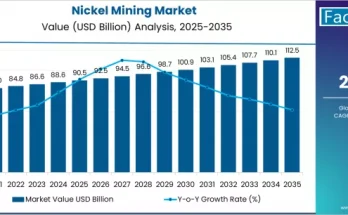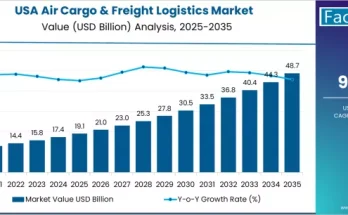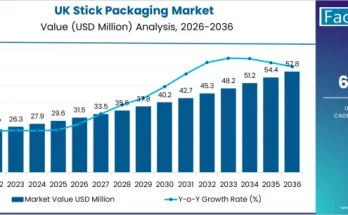The global voice evacuation systems market is poised for steady expansion as demand for intelligent safety communication solutions accelerates across commercial, industrial, and public sectors. According to a recent report by Fact.MR, the market is projected to grow from USD 1.6 billion in 2025 to approximately USD 2.8 billion by 2035, recording an absolute increase of USD 1.2 billion over the forecast period. This translates into a total growth of 75%, with the market forecast to expand at a compound annual growth rate (CAGR) of 5.8% between 2025 and 2035.
Growing awareness of emergency preparedness, stringent safety regulations, and technological advancements in integrated communication systems are fueling this market’s growth. Voice evacuation systems play a critical role in alerting and guiding occupants during emergencies—offering clear, pre-recorded, or live voice messages that improve evacuation efficiency compared to traditional alarm systems.
Market Drivers: Smart Buildings, Safety Compliance, and Technological Advancements
Rising Focus on Safety and Regulatory Compliance
The increase in building safety mandates across industries such as transportation, healthcare, hospitality, and manufacturing is a primary driver. Governments and safety authorities worldwide are enforcing standards that require intelligent evacuation systems to ensure occupant safety. Voice evacuation systems help reduce panic, enhance coordination, and ensure compliance with fire safety and emergency communication regulations like NFPA 72 and EN54.
Integration with Smart Building and IoT Technologies
Modern infrastructure is increasingly adopting integrated safety and communication solutions. The integration of voice evacuation systems with building management systems (BMS) and Internet of Things (IoT) networks enables real-time alerts, centralized monitoring, and automated response capabilities. These systems are being designed with AI-driven analytics, touchless activation, and wireless connectivity, transforming emergency communication into a seamless, intelligent process.
Growing Adoption Across Commercial and Industrial Facilities
With the rise in construction of large commercial complexes, airports, metro stations, and industrial facilities, demand for robust evacuation systems has surged. Organizations are investing in next-generation solutions capable of multi-zone announcements, multilingual support, and remote system diagnostics, ensuring improved performance and reliability.
Technological Innovations Shaping the Market
Manufacturers are developing advanced digital voice evacuation panels and networked audio systems that ensure uninterrupted communication during power outages or system failures. Integration with public address (PA) systems, fire detection units, and mass notification platforms enhances situational awareness and response times.
Key innovations include:
- AI-enabled voice recognition for dynamic announcements.
- Cloud-based system management for remote operation and maintenance.
- Modular designs for scalability across small and large facilities.
Competitive Landscape
The voice evacuation systems market is characterized by the presence of leading global and regional players focusing on innovation, compliance, and integration capabilities. Companies are expanding their product portfolios, forming strategic alliances, and leveraging AI and IoT to enhance reliability and performance.
Key Players in the Voice Evacuation Systems Market:
- Bosch Security Systems
- Honeywell International Inc.
- Johnson Controls International plc
- Eaton Corporation plc
- Siemens AG
- TOA Corporation
- Baldwin Boxall Communications Ltd.
- Kentec Electronics Ltd.
- Potter Electric Signal Company, LLC
- Hacousto
These players are investing in R&D, expanding production capabilities, and forming partnerships with construction and fire safety solution providers to cater to diverse industry needs.
Recent Developments
- June 2025 – Siemens introduced a new generation of intelligent voice evacuation and public address systems integrated with AI-based diagnostics for real-time fault detection.
- February 2024 – Honeywell launched an IoT-enabled evacuation system designed for hybrid building environments, offering voice guidance and multilingual support.
Future Outlook: Intelligent and Connected Safety Ecosystems
The next decade will witness the evolution of smart evacuation systems that leverage connectivity, automation, and data analytics to enhance public safety.
Key trends include:
- AI-Based Predictive Alerts for early emergency detection.
- Cloud-Integrated Platforms for real-time system control and updates.
- Wireless, Modular Installations reducing setup time and maintenance costs.
- Global Adoption in Smart Cities driven by sustainability and digital infrastructure development.
By 2035, voice evacuation systems will become an integral component of smart building infrastructure, ensuring faster, clearer, and more effective emergency communication worldwide.



